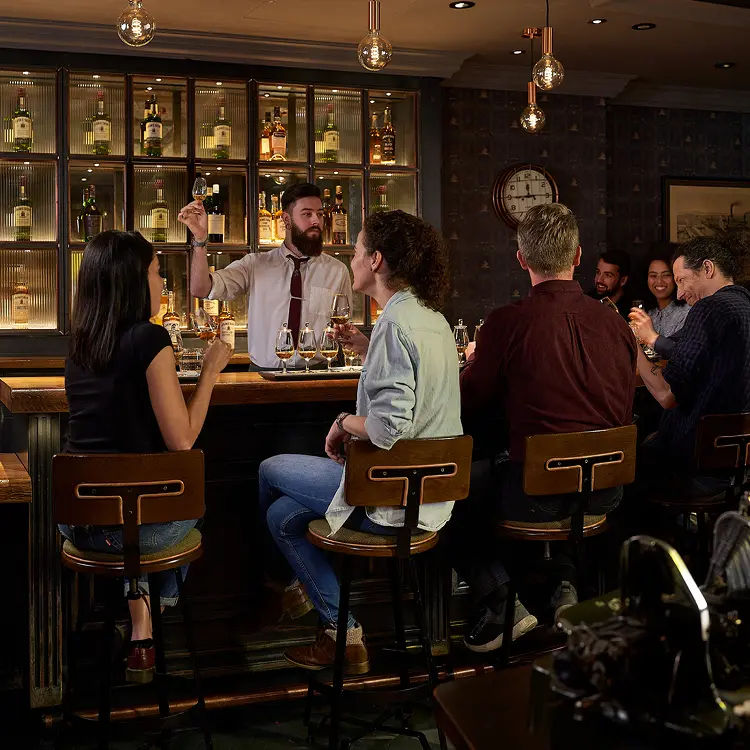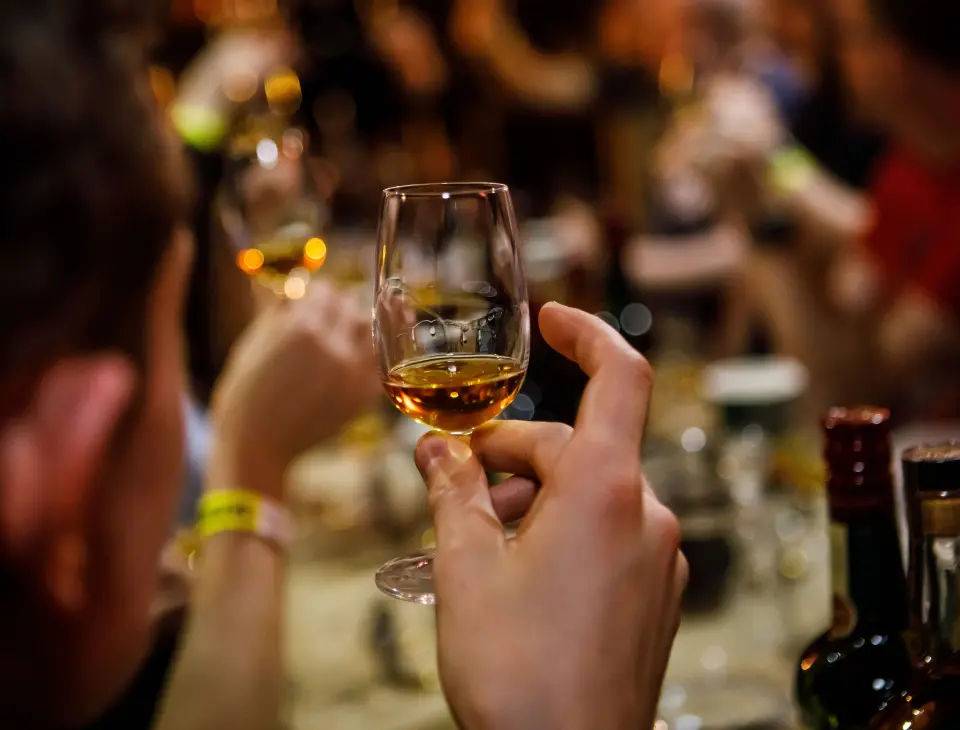
Tips and Techniques for Enjoying Your Dram
How To Taste Whiskey: Tips From Our Irish Whiskey Experts
You’re smitten with whiskey. We get it. So are we. Now you want to learn how to appreciate your glass of Jameson a little more and share your enthusiasm with friends, family, and strangers. Sounds like a fantastic way to widen the circle, which is totally our thing. So, we’ve put together a little guide on how to properly taste whiskey, to help you, help us…help you?
In any case, let’s look at the proper way to taste whiskey, so you can widen your knowledge of the drink we love, and widen the circle in turn.
A terrific way to learn how to do a whiskey tasting is to take a class. Not only will the whiskey be provided, but they’ll also provide some of the tools for the job, such as Glencairn or Copita-style glasses, some room temperature water, and expertise.
However, in this case, we’re flying solo, so let’s work with what we have. First, we need some whiskies. You’re already halfway to being a connoisseur so you probably have a few different bottles in your cabinet. If not, you can experiment with our Jameson Family Miniature Pack.
Preparing to Taste
Next, you need a tasting glass. A copita-style glass is traditional, but a modern wine glass will do nicely, particularly if it’s on the smaller side.
You could also use a Glencairn glass, or the Tuath Irish Whiskey Glass, which is another common whiskey glass for tasting. These are quite distinct so it can be harder to find a replacement, but your grandmothers’ sherry glasses will make a good substitute.
Once you’ve chosen your vessel, it’s time to pour out some measures of whiskey. You want the whiskey at room temperature for the optimum balance of flavour. Too cold; and some flavours are restricted when tasting. Too warm; and some flavours are over-amplified.
To get the most enjoyment out of a tasting experience, doing a blind tasting is best.
Once you’ve poured out your measures, close your eyes and swap them around a few times. If you’re tasting with a friend, you can do it for one another or a little solo palate practice, record yourself swapping measures on your phone so you can review and see how close you were.
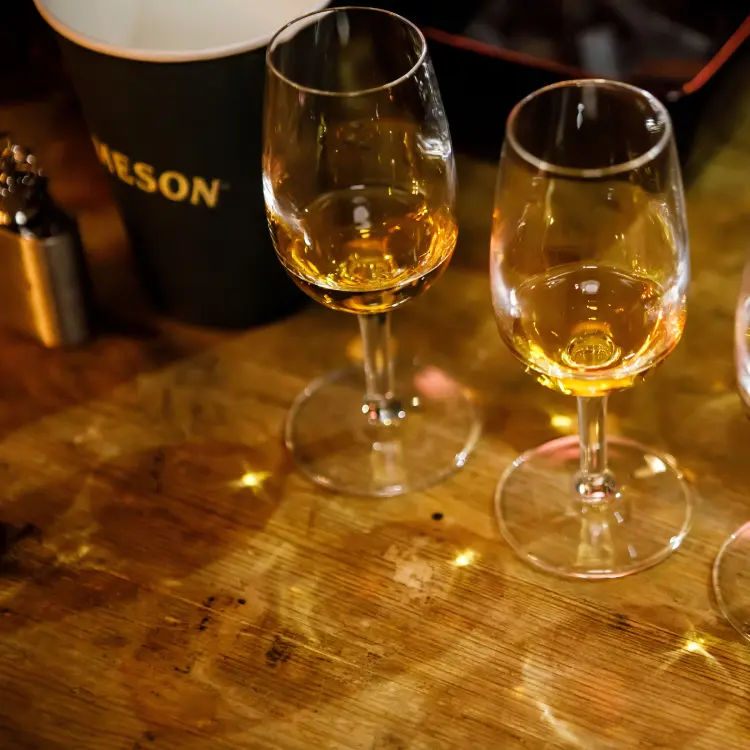
Now take a peek. Colour is the first thing we look at in whiskey. Whiskey is colourless when first distilled. The amber colour comes from the barrel ageing process. Different whiskies are aged in different barrels and casks.
Generally, the darker the whiskey, the longer the ageing, however, distillers implement a range of techniques. Jameson Black Barrel is partially aged in double-charred oak barrels, which imparts a rich unique flavour and deepens the colour significantly.
Now gently swirl the whiskey around the walls of the glass. With whiskey, swirling is for visual purposes instead of aeration. We’re looking for whiskey legs.
Hey now! Get your head out of the gutter, let us explain. What does it mean when a whiskey has legs? We’re referring to how droplets of whiskey run down the side of the glass. And it is in the mouthfeel where we discover what legs it has. If it’s heavy and thick this means its creamy and buttery. Bit if it’s thin, you can expect a more floral and light experience.
Now, let’s taste. Take a glass of water and cleanse your palate of the potato crisps and liquorice Allsorts.
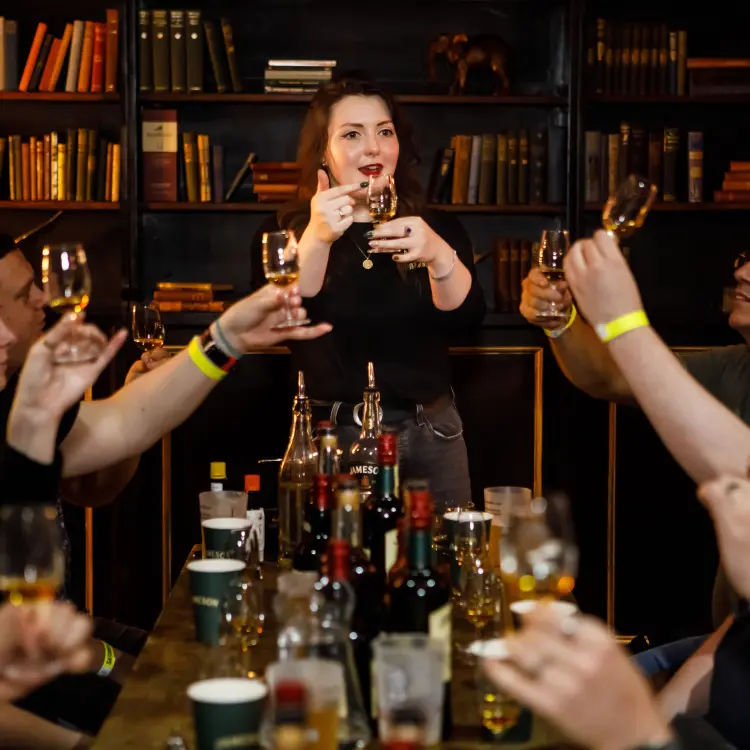
How to Properly Taste Whiskey in 5 Steps
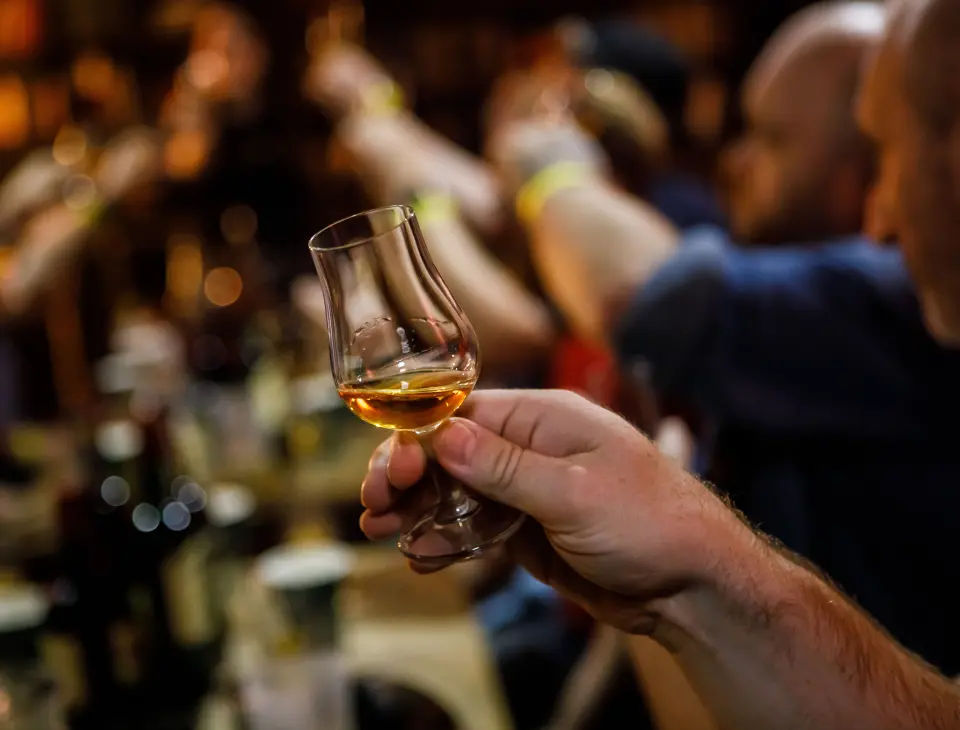
Aroma
Before tasting each whiskey, pick up each glass by the stem and bring it to your nose. Take a breath with your mouth closed and another with your mouth open. This is called (surprise surprise) nosing the whiskey. Here, you’re analysing the aromas of the whiskey.
Jameson has floral and sweet notes with hints of spicy wood, but whiskey is complex, and smell is subjective. You might smell something else, and of course, different whiskies will smell different. Single malts often smell different from a regularly blended whiskey, and cask-strength whiskey has a higher alcohol content which will be reflected in the whiskey’s bouquet.
Palate
Now take a sip. Allow the whiskey to coat your tongue, cheeks, and front of the mouth, and linger for the moment. You want to get a feel for the liquid and flavour. Is there a slight numbing sensation? Does the whiskey feel like water in your mouth or is it silky? What notes of flavour are you getting? Perhaps, some nuttiness? A hint of spice?
Finish
The finish of whiskey is decided in the swallowing. Is the whiskey smooth when swallowing, or is
it a little spicier? Has the flavour profile changed? Are you tasting something new? Which flavours are lingering, and which have disappeared?
Reflect
Take a moment. How do you describe this whiskey? Does it taste full-bodied? Is it sweet? Fruity?
What comes to mind after all is said and done?
Repeat
This is our favourite part of tasting whiskey. Repeating the process. Take another sip for good measure. Try adding some water. A few drops of water allow the whiskey’s bouquet to open. Which do you prefer? Really? Interesting. On to the next!
Enjoy A Proper Whiskey Tasting with The Experts
Now that you know enough to taste whiskey as an amateur, why not learn how to taste whiskey like an aficionado?
We have our Jameson experts ready to show you an extra thing or two about the wonderful world
of Irish whiskey at Jameson Distillery Bow St. Dublin.
